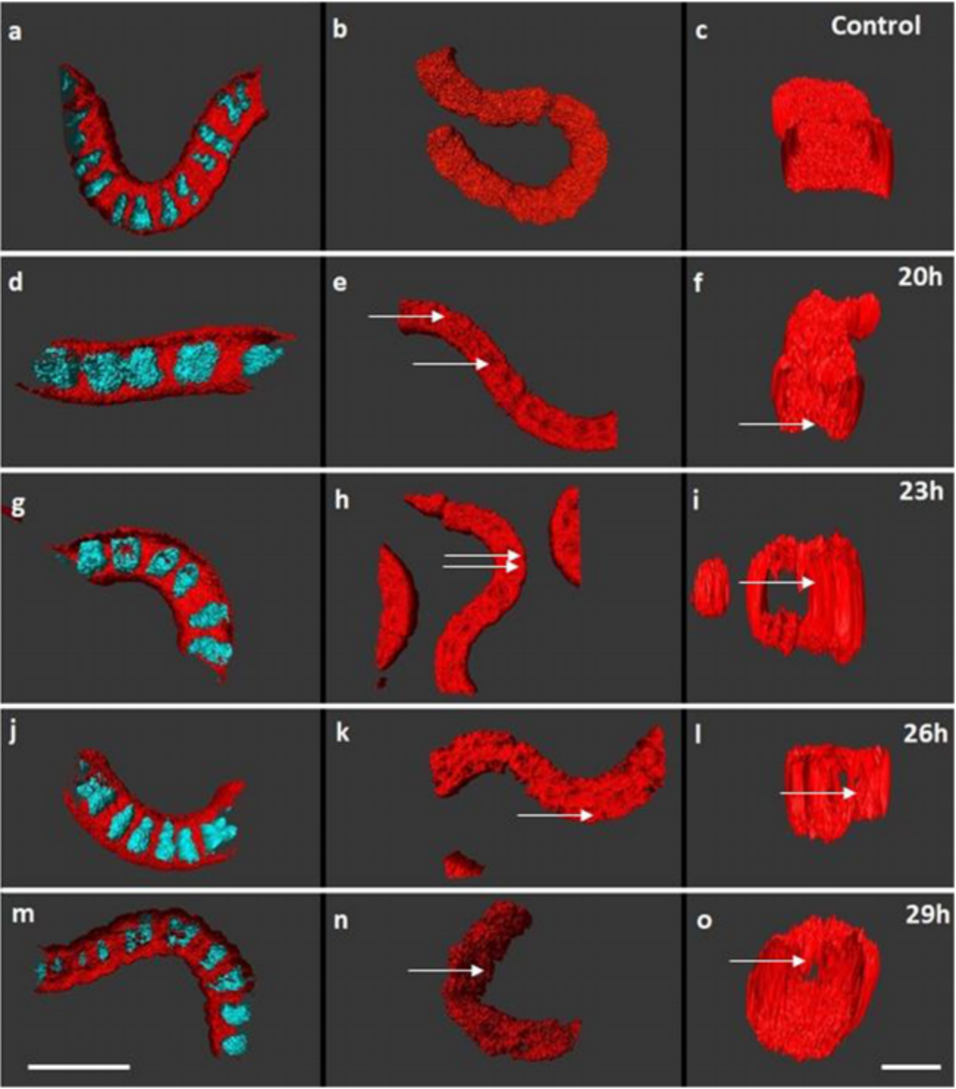Click here to get to the full paper.
Abstract
The alkaliphilic cyanobacterium Limnospira fusiformis is an integral part in food webs of tropical soda lakes. Recently, sudden breakdowns of Limnospira sp. blooms in their natural environment have been linked to cyanophage infections. We studied ultrastructural details and prophage components in the laboratory by means of confocal laser scanning microscopy (CLSM) and transmission electron microscopy (TEM). For a comparison at the subcellular level, we included transmission electron microscopy (TEM) material of infected cells collected during a feld survey. Compared to TEM, CLSM has the advantage to rapidly providing results for whole, intact cells. Moreover, many cells can be studied at once. We chemically induced lysogenic cyanophages by means of mitomycin C (MMC) treatments and studied the ultrastructural alterations of host cells. In parallel, the number of cyanophages was obtained by fow cytometry. After treatment of the culture with MMC, fow cytometry showed a strong increase in viral counts, i.e., prophage induction. CLSM refected the re-organization of L. fusiformis with remarkable alterations of thylakoid arrangements after prophage induction. Our study provides a frst step towards 3D visualization of ultrastructure of cyanobacteria and showed the high potential of CLSM to investigate viralmediated modifcations in these groups.

